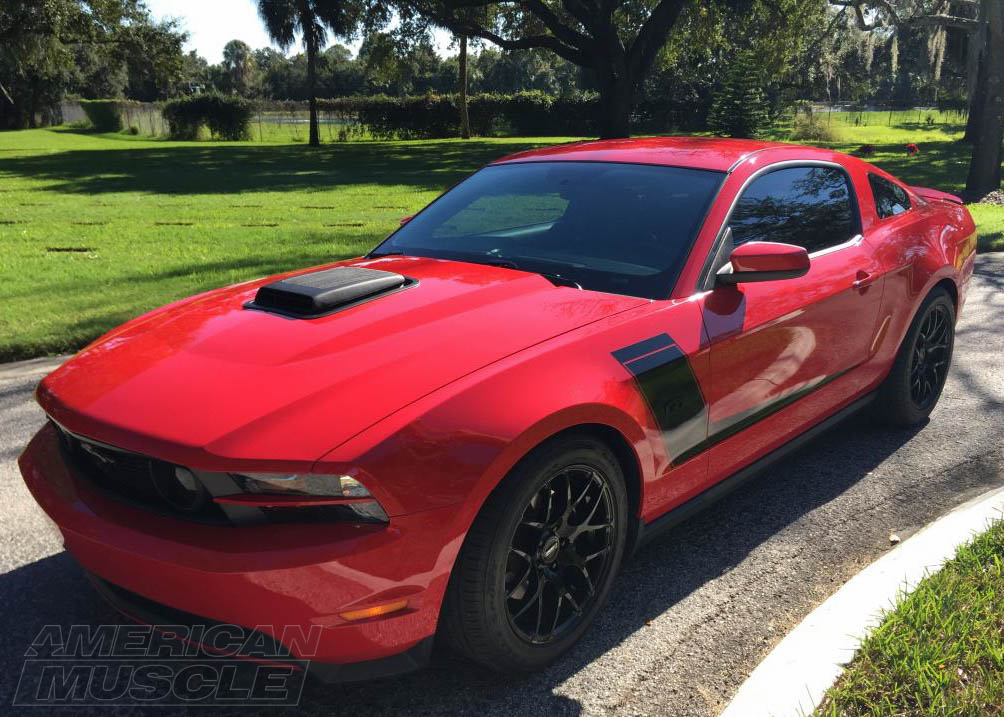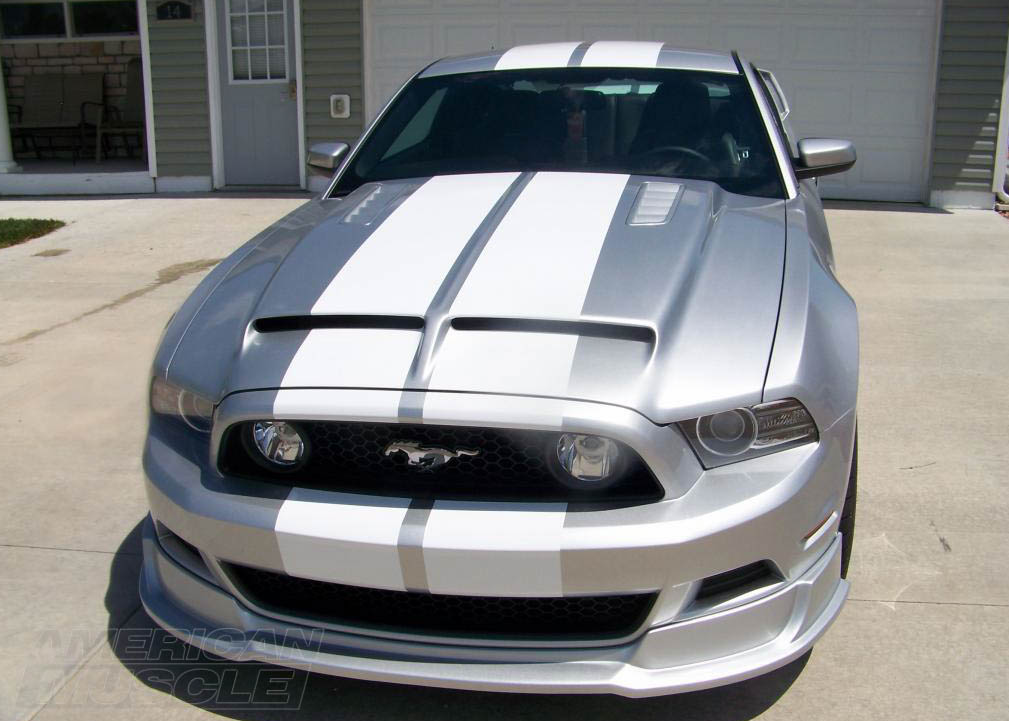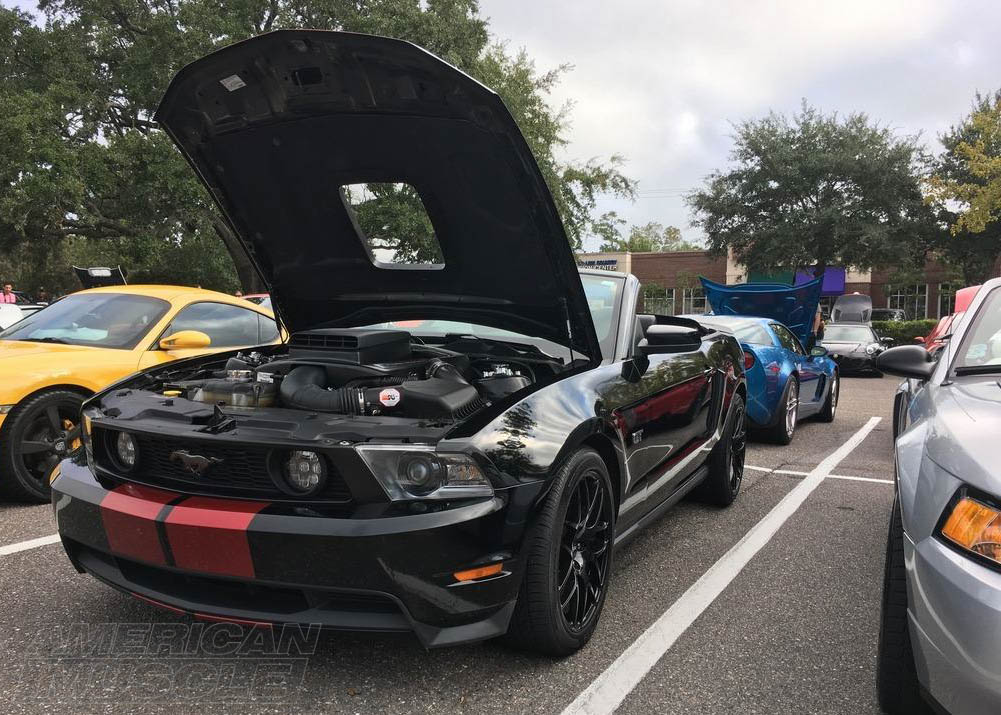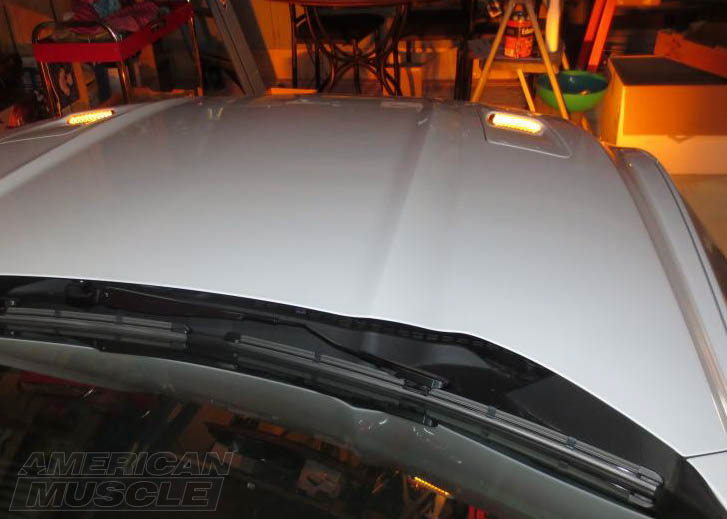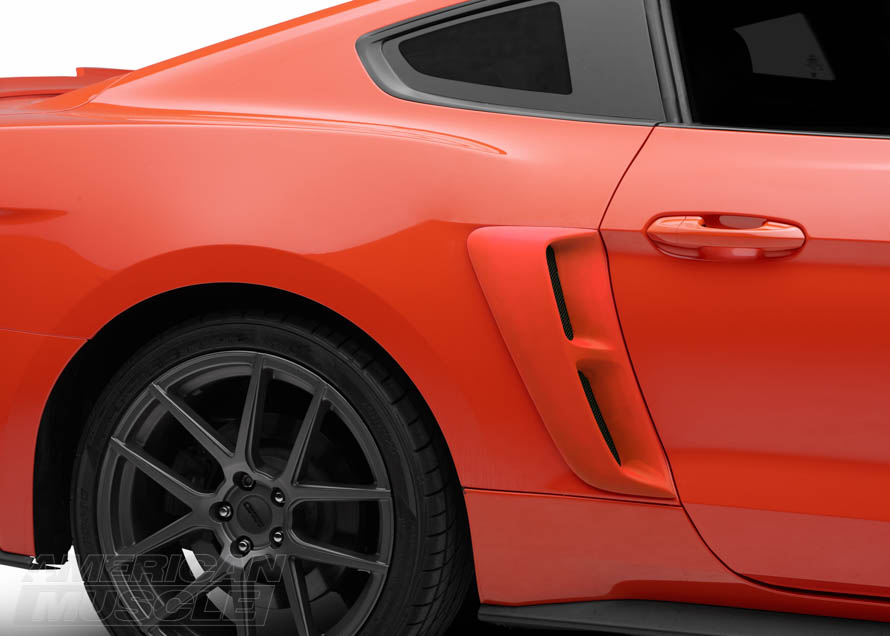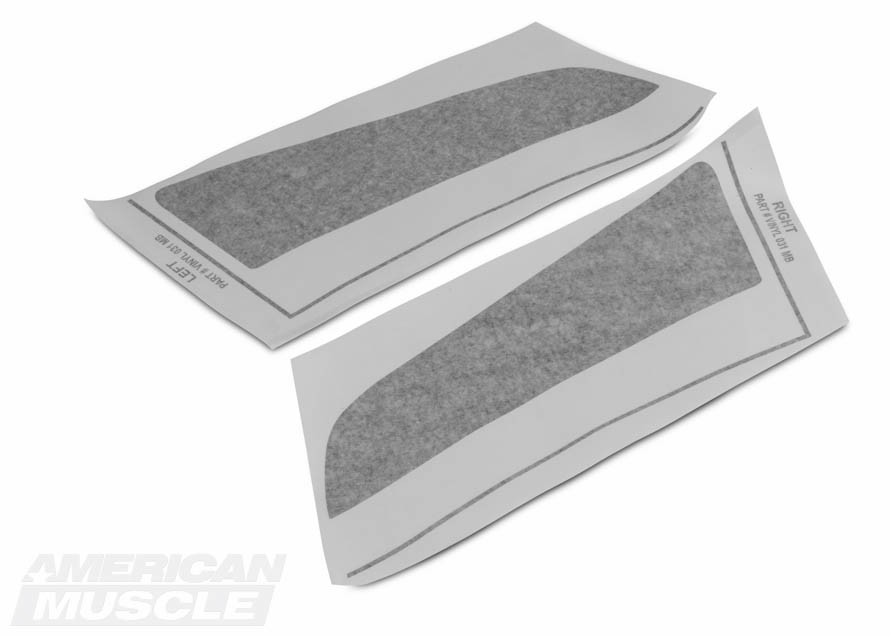Hood scoops offer much more than that intimidation factor as your pony flies by incoming traffic on the highway. They provide a little bit of performance boost and styling that makes your Mustang ready to rock. They’re also very popular; try spotting a Foxbody Mustang without a hood scoop installment. Aside from their appealing styling and aerodynamic design, they’re also an important addition to your air intake system. Add a retro look to your old pony with a shaker scoop or a complete performance boost with an intercooler hood scoop conversion. Not only is a hood scoop installment incredibly cheap, they virtually pay for themselves over time by improving fuel economy. There’s no reason to purchase a pony if you don't want to make it scream!
Contents
Shop Mustang Hood Scoops
Hood Scoops add a distinctly old school muscle car look while also providing improving air flow through modern engineering. Capitalizing on sleek aerodynamic designs a hood scoop will give your pony a breath of fresh air and improve mpg. An upgraded hood scoop is a great modification for the enthusiast who wants to improve their performance and look good while doing so.
